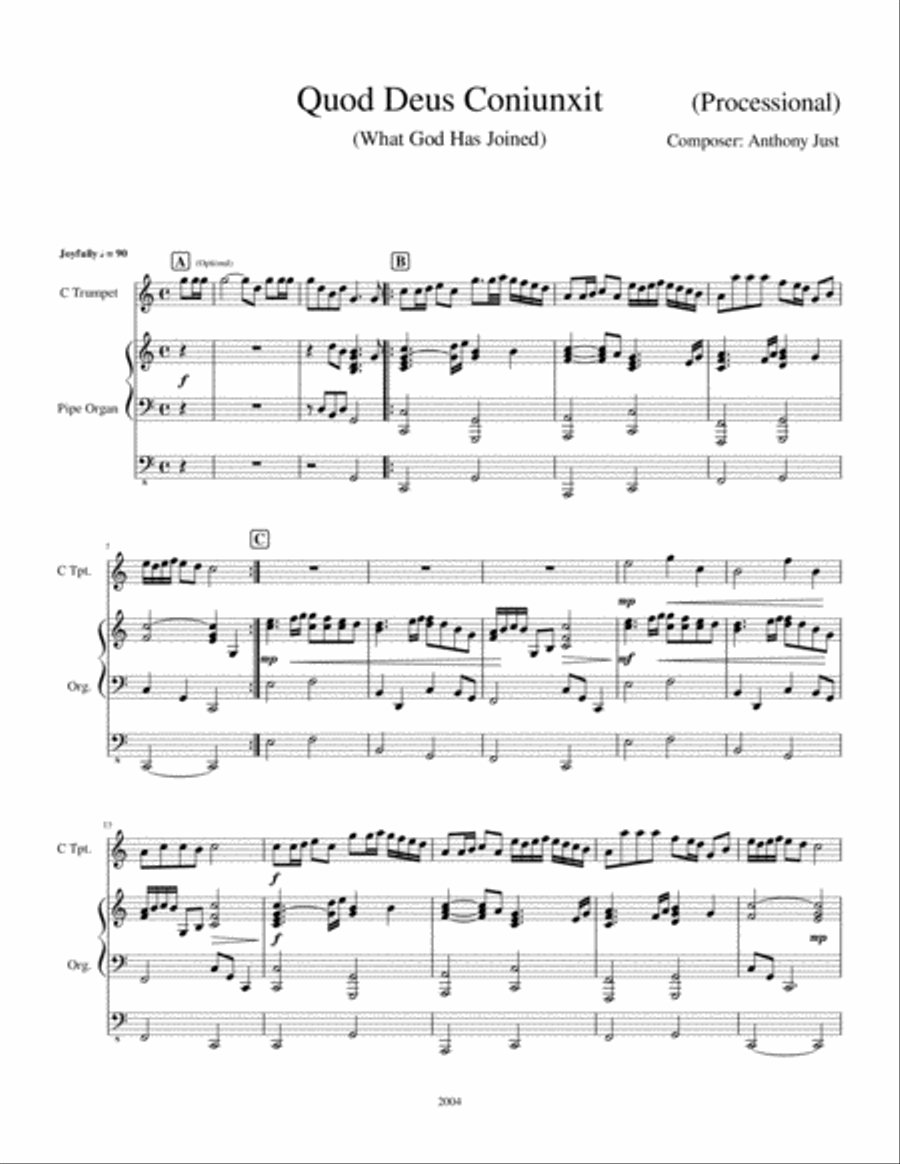Instrumental Duet Instrumental Duet,Organ,Trumpet - Level 3 - Digital Download SKU: A0.1028814 Composed by Anthony Just. Christian,Contemporary,Sacred,Wedding. Score and parts. 2 pages. Justified Notes Music Group #4296771. Published by Justified Notes Music Group (A0.1028814). This piece for C-Trumpet and Organ was written as a Wedding Processional for the Cathedral of the Assumption in Louisville, KY, and first performed by the Cathedral's organist, Dr. Philip Brisson. It has since been added to the Cathedral's regular rotation of Mass processionals. Quod Deus Coniunxit is the first line of the verse Therefore what God has joined together, let no man put asunder. The piece shows two people as two voices (in this case, trumpet and organ) interweaving harmonies, passing the melody between them, symbolizing the joyful collaboration and triumphant celebration in two people becoming one. As the trumpet fades out in section D, the minor, discordant organ melody symbolizes difficulties and hard work. The symbolism continues as the trumpet fades back in, supporting the organ, ushering the melody back to a major chord in section E, as they work together towards a triumphant finish.Since this piece was composed as a processional for specific location, the length was written to fit the bride's 75 step procession. But it was deliberately written in sections to be flexible. The piece can (and should) be altered to fit the venue. The trumpet flourish in A, meant as a call to attention, can be omitted if desired. Section B can be repeated, and/or Section E can be omitted or repeated, to suit the necessary length.I hope you enjoy this piece!Anthony Just
